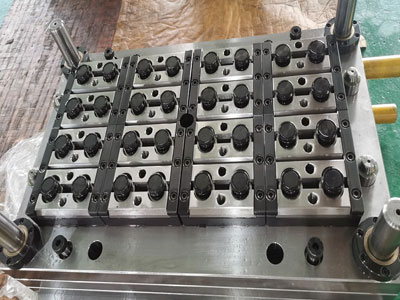As one of the primary tools used for injection molding product processing, injection mold quality has an enormous influence on product quality. Furthermore, as molds constitute a considerable portion of production costs in injection molding processing enterprises and their service life directly affects cost of products, improving their quality while maintaining and repairing them properly to extend service life is a top priority for injection molding product processing firms to reduce costs and maximize efficiency.
1. Processing enterprises should initially equip each mold with a resume card outlining its use, care (lubrication, cleaning and rust prevention) and damage status. From this data can be determined which parts and components have been damaged as well as their degree of wear as well as providing information for discovering and solving problems. In addition, process parameters of both materials used within production can also be provided so as to shorten trial run time and increase production efficiency.

2. Processing enterprises should test various properties of the mold during normal operation of an injection molding machine and mold, and measure dimensions of final molded plastic parts produced from this mold. From this data can be determined the current state of the mold as well as any damage to its cavities, core, cooling system or parting surface that needs repairs; further information provided by plastic parts will allow identifying damage state and repair measures required to repair said damage to be determined as well.
3. It is crucial that attention be given to tracking and testing multiple components of a mold: Ejection and guide components are integral parts that ensure smooth molding opening/closing motion and part ejection; any damage could potentially halt production halt. Therefore, it is necessary to regularly maintain lubrication of mold thimble and guide post (with an appropriate lubricant), and inspect for deformation and surface damage on these components. Once discovered, any defective parts should be promptly replaced; after finishing a production cycle, professional anti-rust oil should be applied to the working surface, motion components and guides of a mold to protect its working surface, motion components and guides against corrosion; particular attention should be paid to protecting bearing parts of gear/rack molds as well as elastic strength of spring molds in order to keep them in their optimal operating conditions;

However, they could use more training. They had to go back through it all again – at first on foot then by car! So they turned back towards home again but soon found they couldn’t. Hence why some decided to stay behind at work or simply walk home after having enough. As production time passes, cooling channels become susceptible to scale, rust, silt and algae deposition which decreases their cross section by narrowing and narrowing them further, drastically decreasing heat transfer between cooling liquid and mold and increasing production costs for an enterprise. Cleaning of cooling channels should be given particular care; for hot runner molds, ensuring their heating and control systems remain up to date can prevent costly production failures, so this aspect should also be prioritized. After each production cycle, all heaters, probes and thermocouples on the mold should be measured with an ohmmeter to check for damage and immediately replaced if any is found. In order to identify problems quickly and take timely preventative steps.
4. Proper mold surface maintenance is of critical importance, as its maintenance directly influences product surface quality. Rusting prevention should be top priority, so selecting an anti-rust oil of suitable quality and professional grade should be prioritised when selecting anti-rust oil solutions. Once a mold completes its production task, various methods should be employed to carefully and safely dispose of injection residue based on different injection molding materials. Copper rods, wires and professional mold cleaning agents can be used to quickly and effectively clean molds of residual injection and other deposits that remain after injection molding is completed, before air-drying the molds. Hard objects like iron wires and steel bars should not be used as they might scratch the surface. If there are rust spots caused by corrosion-injection molding processes then an angle grinder must be used to grind and polish these spots before spraying on anti-rust oil for safe storage of the molds.

